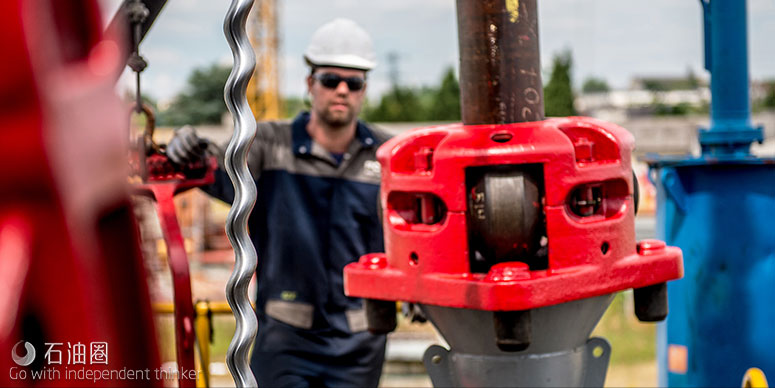Hydraulic tubing anchor
Tubing anchors are primarily used for mitigating tubing movement (up and down) in rod pump artificial lift. The tubing movement is caused by the cyclic stroke of the plunger inside the barrel at the bottomhole pump. The drawing of the plunger on the upstroke causes the tubing to rise while the descending of the plunger on the downstroke causes the tubing to drop.
At anywhere from three to nine strokes/min., tubing wear can be severe and many times catastrophic, resulting in a hole in the tubing and the need to pull the well. Traditional mechanical anchors are the rival of the hydraulic tubing anchor. However, they come with several disadvantages: 1) required to turn to actuate even in deviated holes; 2) large diameter can create sand bridges and gas slugs; 3) many moving parts increase the risk of getting stuck; and 4) numerous open cavities create increased opportunities for scale and other detritus to form.
All of these disadvantages are overcome with Black Gold Pump and Supply’s new hydraulic tubing anchor, Fig. 5. It contains large bypass areas preventing sand bridges and fluid slugs. It has one moving part, which is actuated by pressure and not by tubing rotation, and it has a flush body design mitigating the opportunity for scale build-up.
Hydraulic tubing anchors are simple to install and extract. Hence, the ease of operation is a strong advantage of these units. Unlike a mechanical anchor, there is no need for surface manipulation to set a hydraulic anchor. Instead, hydraulic anchors are activated when the insert or tubing pump is set, and the pressure in the tubing string is greater than the pressure in the casing annulus. Simply unseat the pump to retrieve the anchor. The pressure will equalize and the anchor will no longer be in tension.
Black Gold has run more than 5,000 hydraulic anchors with key advantages being significantly reduced rig time/cost on installation, optimized gripping power to the casing and significantly reduced rig time/cost upon extraction.
Pump stroke optimization
Encline Lift’s pump stroke optimization (PSO) device is designed to address problems encountered when rod pumping in rapidly changing flow regimes observed with oil production from horizontal wellbores. Current RPC technology was developed for vertical wells. The application of RPCs to horizontal wells often results in frequent full spectrum speed changes and excessive low pump fillage events, both of which are undesirable.
A method many operators employ to mitigate this problem is to manually reduce the maximum working speed set point to a value slightly above that required to handle all the daily production. This intervention must be done routinely, and is counterproductive should the well see increased deliverability due to events such as downtime or offset fracs. PSO replaces human intervention by regularly adjusting the maximum working speed based on analysis of several hours of observed pumping speeds and low pump fillage events. The result is better pump fillage, which results in better rod string and equipment loading, and in some cases increased production. Also, operator personnel are free to address other, more important tasks.
Many RPC’s allow for the downstroke to operate at a slower speed than the upstroke. For RPC’s with this feature, the PSO device decreases the downstroke pumping speed preferentially, leaving the upstroke pumping speed unchanged until an operator-set differential is reached. This practice results in less “detrimental” pump slippage, since the percentage of time spent on the upstroke is reduced.
Pump slippage during the upstroke is termed detrimental, as it occurs when the standing valve is open, with every ounce of slippage resulting in one less ounce of fluid entry through the standing valve. The opposite is true for pump slippage during the downstroke, which is viewed favorably, and only occurs while both the standing and travelling valves are closed.
Downstroke pump slippage serves to increase the pressure between the two closed valves, and is actually helpful in opening the travelling valve. The additional time spent on the downstroke allows for more of this favorable pump slippage, but more importantly, it allows more time for evolving gas to rise then exit the rod pump’s gas anchor. This is valuable given the oil in the pump of a horizontal well is extremely live, unlike in vertical wells with a sump pump. Less slippage and better pump fillage both result in less strokes per day for the same production, which results in less downhole wear and less power consumption.
PSO field trials began in two Eagle Ford wells in March of 2015, with the successful results presented at the ALRDC Sucker Rod Pumping workshop in September 2015. A year later at the workshop, the results of a successful four well Bakken test were presented at the 2016 workshop, Fig. 6. Additionally, a case study on 20 Eagle Ford wells was presented at the SPE Artificial Lift Conference in Houston in October 2016 (SPE 181228). PSO has now been successfully implemented in the Permian basin, DJ basin, Bakken and Eagle Ford.


 石油圈
石油圈

